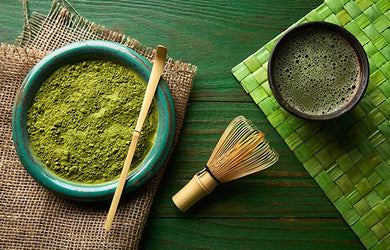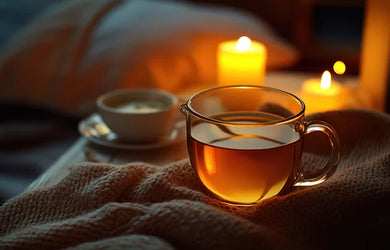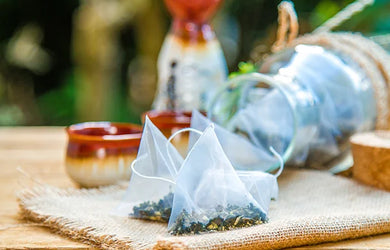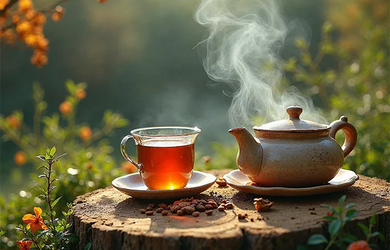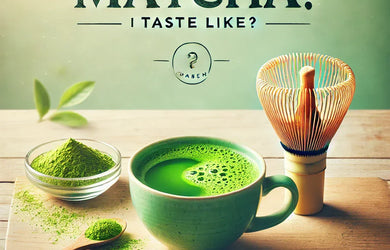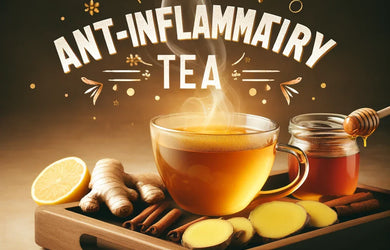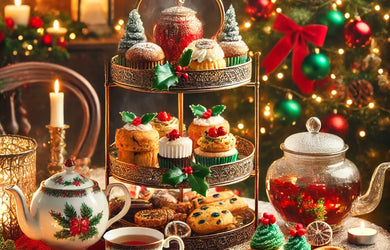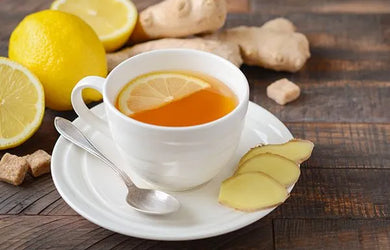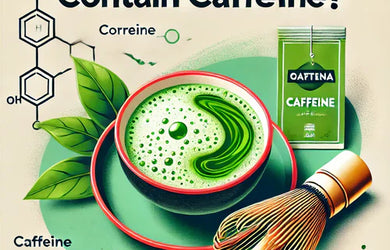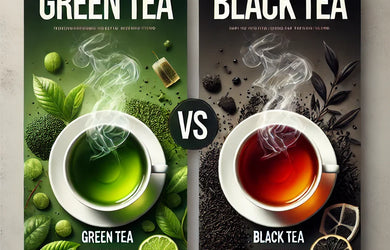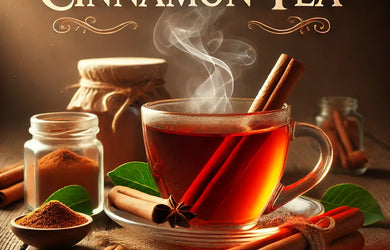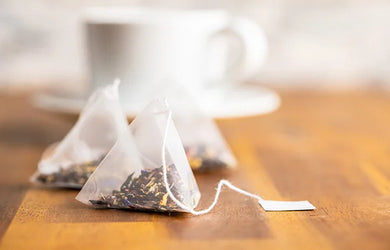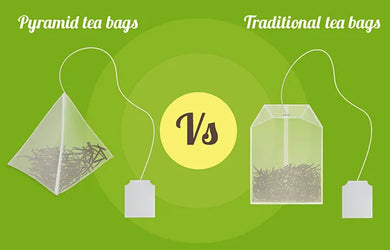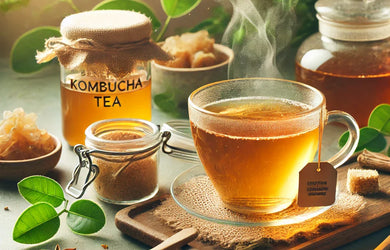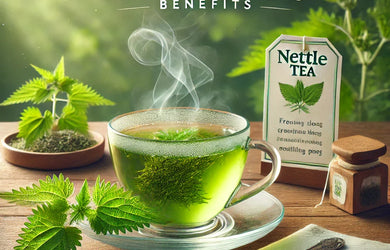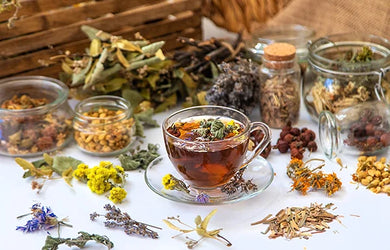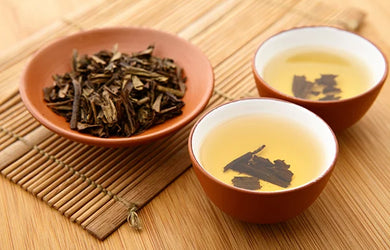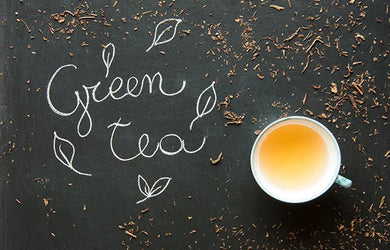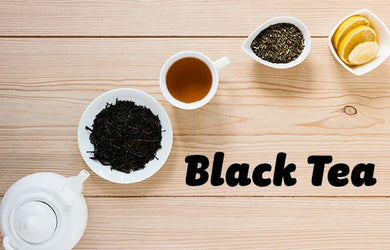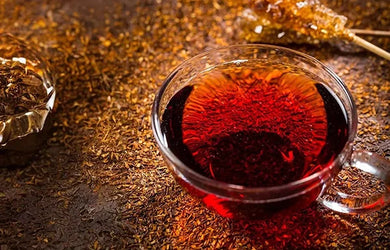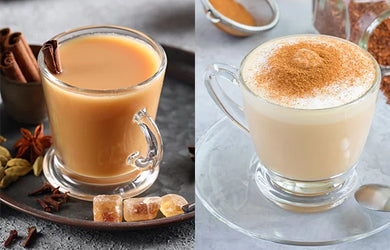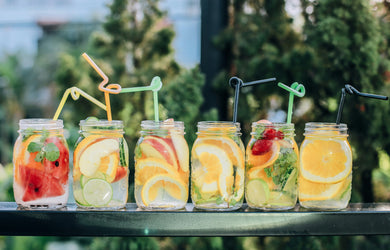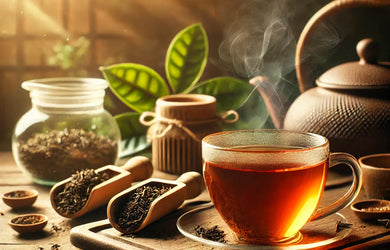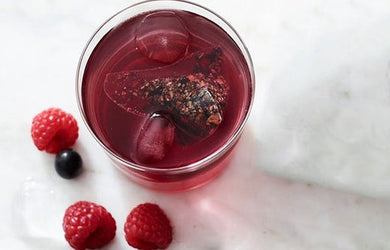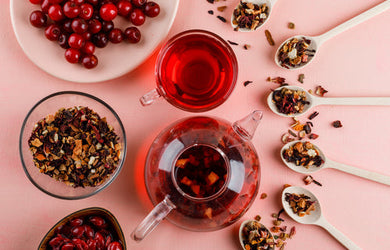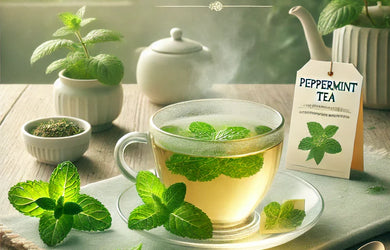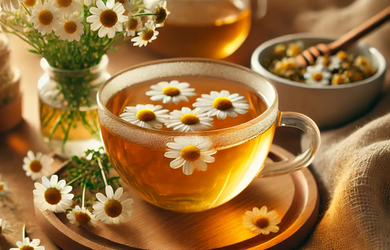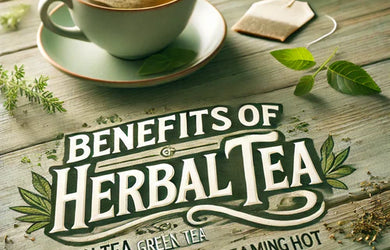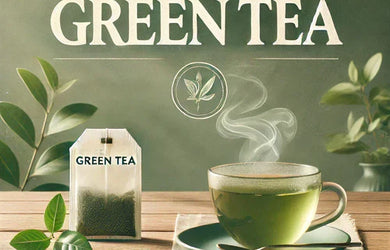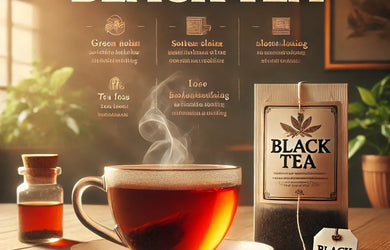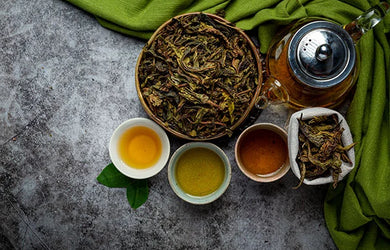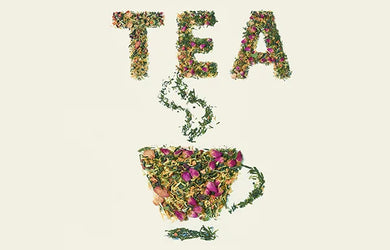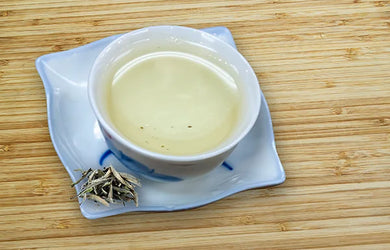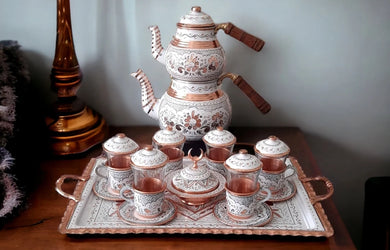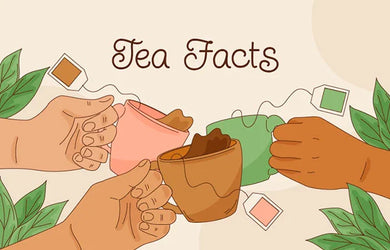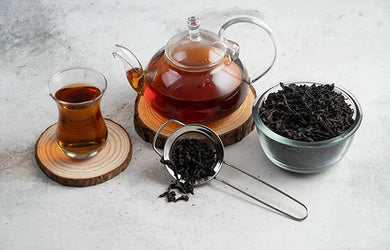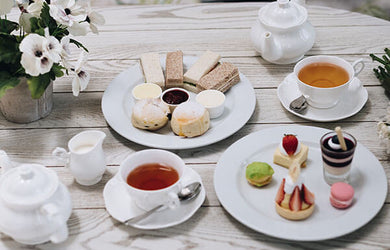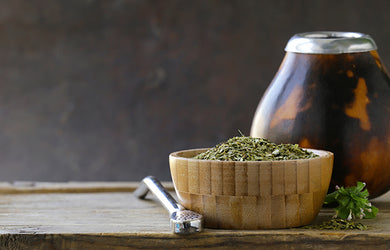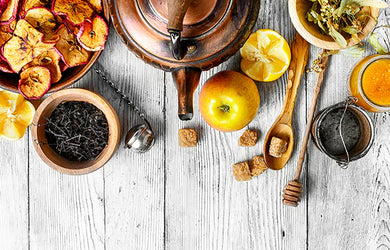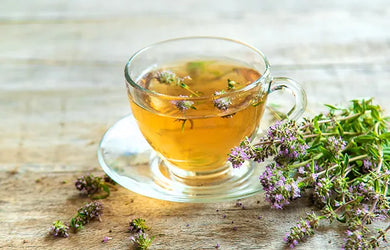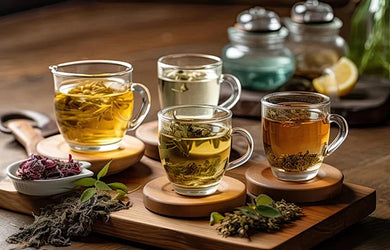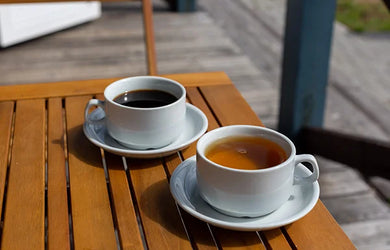rooibos tea has rightfully earned its nickname, the "south african ruby", because of its amazing flavour and stunning colour (just like ruby). its brilliant colour has also led to another nickname – the red bush tea!
it’s an interesting herb that’s gaining popularity worldwide. and we invite you to join us as we explore this interesting gem of a brew from south africa. we'll uncover its origins, cultivation process and characteristics. but that’s not all, we’ll also discuss how it differs from traditional tea and what makes rooibos stand out.
so, get ready to discover this amazing herb – the one and only rooibos tea.

what is rooibos tea?
rooibos tea is a popular herbal infusion sourced from the leaves of bushy and low growing plants found in a mountainous region near cape town. these plants belong to the legume family and are known for their straight, needle-like leaves. it may not be obvious, but this feature is reflected in the second part of their botanical name – aspalathus linearis.
after these needle-like leaves are processed, they can be steeped in freshly boiled water to make a ruby-coloured cup of red bush tea. it just takes around three to five minutes of steeping – and you get a refreshing drink that can be served hot or chilled. it tastes great both ways!
rooibos tea tastes smooth and slightly sweet, with a bit of nutty flavour. if you brew it longer, it gets stronger and richer, and you can smell a warm and woody aroma in your cup. while rooibos is delicious on its own, it can be enhanced by adding some ingredients like milk and honey.
the cultivation process and the unique characteristics of rooibos tea
rooibos is cultivated in the cederberg mountainous region of south africa. this may seem surprising, but that’s the only region in the world where these plants can flourish. the region's sandy soil and mediterranean climate suit them – that means hot, dry summers and cold winters.
it’s cultivated using eco-friendly processes which kick off in late january each year. that’s when seeds are organically germinated and planted. as winter sets in with its rains and cooler temperatures, seedlings are carefully transplanted into the fields.
fast forward to the end of the year (around december to february), and it’s harvest time for rooibos, which grow to approximately 1 meter in height. the plucked leaves are bundled up and sent off to processing hubs for further handling and packaging.
by the way, these tea leaves have interesting characteristics – they're caffeine-free, packed with antioxidants and boast low tannin levels. additionally, they make a naturally sweet infusion, with a glowing reddish-brown colour.
difference between rooibos tea and traditional tea varieties
red bush tea and traditional tea varieties (black, green, white and oolong teas) have some fascinating differences. firstly, rooibos comes from the aspalathus linearis plant found only in south africa, while traditional teas are sourced from the camellia sinensis plant grown all over the world.
this key difference leads to all the others, with caffeine content being the most notable one. unlike traditional teas, rooibos is caffeine-free – perfect for making a drink that’s refreshing and soothing.
but it’s not just the absence of caffeine that makes it refreshing; its flavour is just as important. it has a distinct taste that’s naturally sweet and earthy, unlike traditional teas, which have a wide range of flavours but none quite like this one.
finally, there’s one difference we simply couldn't overlook – a lifesaver for those of us who struggle to keep track of steeping time. unlike traditional teas, rooibos won't get bitter if you let it steep a little longer – it just gets richer.
red bush tea: another name for rooibos
given that "rooibos" translates to "red bush" in afrikaans, it's quite logical that the tea became commonly known by this name. this moniker rightly describes the distinctive reddish-brown colour of the tea leaves and the resulting brew.
however, "red bush tea" isn’t as widely recognised globally as "rooibos", except, of course, in south africa and a few other countries including britain and australia. in australia, the name “red bush” gained traction alongside the tea’s popularity, because of its colour. it's become a top pick for many, especially those keen on caffeine-free drinks.
while it's commonly enjoyed on its own, many aussies also enjoy it with honey and milk as rooibos latte. additionally, it's preferred as an iced tea, and often mixed with fruit juices during warmer months.
moreover, flavoured red bush teas with mint, vanilla and chamomile variations, are gaining traction – offering a delicious range of options for those who like rooibos in different flavours. but it’s not limited to simple drinks, rooibos is also enjoyed in cocktails like the rooibos mojito and rooibos berry spritzer.
another emerging trend is the preference for green rooibos tea (the unfermented version), liked for its higher antioxidant content and herbal taste.
unveiling the mystery of red tea
the term "red tea" can sometimes confuse many because it's linked with two different types of tea – rooibos tea and chinese red tea, also known as black tea. it’s easy to lose track of which one is being referred to. let’s take a closer look at each one of them and attempt to clarify the matter.
the link between rooibos and the term "red tea" stems from the rich reddish-brown colour of rooibos leaves. even the resulting brew from stefeping them in water is reddish-brown. this colouration has led to rooibos being referred to as red tea in various regions. interestingly, though, rooibos isn't one of your traditional teas. then, what is rooibos tea? well…it’s a tisane.
however, chinese red tea is a fully oxidised tea sourced from the traditional tea plant (camellia sinensis). it’s commonly known as black tea because of the colour of the leaves but it’s referred to as “red tea” due to the colour of the brew it produces when steeped in water. that colour can range from red to reddish-brown.
by noticing their unique features, like the rich reddish-brown colour of rooibos leaves and the fully oxidised look of black tea, we can easily tell them apart.
where does rooibos tea come from?
rooibos is derived from the leaves of the aspalathus linearis plant that grows in the western cape area of south africa. interestingly, this is the only area in the world that has the unique conditions that are crucial for the cultivation of rooibos.
the history of rooibos dates back over 300 years when european explorers noted its use by the local khoisan people. these local communities harvested rooibos for centuries, long before its commercial cultivation began.
the modern rooibos industry began to take shape in the early 20th century, driven by figures like benjamin ginsberg and dr. pieter lafras nortier. ginsberg perfected the tea's curing process and nortier played a crucial role in cultivating rooibos and developing strains that are suitable for farming.
today, the rooibos market has really grown! hundreds of commercial farmers, alongside small-scale farmers, are involved in its cultivation. additionally, several processing hubs are dedicated to producing red bush tea for the markets.
how is rooibos tea processed?
the plantation of seeds starts in january and goes on till march. their germination then starts a few months after planting, but it usually takes more than a year for the first harvest to be ready.
from december to february, rooibos plants are harvested and bundled into "gerwe" (or big bundles). these bundles are transported to processing facilities, where the leaves undergo cutting, bruising and fermentation to induce enzymatic oxidation.
during this process, the leaves are spread out in thin layers and left to ferment. this oxidation step is crucial for developing the characteristic flavour, colour and aroma of the tea. it transforms the colour from green to deep red and also enhances its aroma.
once oxidised, the leaves are thoroughly rinsed to stop the oxidation process, after which they’re left out to dry under the sun or with some specialised drying equipment. this drying stage is very important because it keeps the leaves fresh for storage and consumption. finally, the tea leaves are checked and labelled.
conclusion
so, hopefully, some of your queries on what is rooibos tea were answered! but there’s always more to learn, especially about this fascinating tea, which can only be cultivated in one place in the entire world.
interestingly this restriction hasn't stopped it from gaining popularity worldwide! from the rugged landscapes of south africa's western cape, rooibos is making its mark everywhere. and why not? it's got all the elements you need in a refreshing drink.
and it lets you get creative with it – so you can enjoy it in various ways, just as we do in australia. now, if you’re keen to experience it, go ahead and order some for yourself!
faqs on rooibos tea
q. what are the different varieties of rooibos tea?
a. rooibos tea has three broad varieties. there's the original red bush tea with its rich red colour and sweet, nutty flavour. then, there's green rooibos – the unfermented version of the red bush tea that has higher antioxidant content. lastly, there are the flavoured red bush teas, offering interesting options in combination with other ingredients.
q. is rooibos tea caffeine free?
a. yes, rooibos tea is caffeine-free! it’s sourced from the aspalathus linearis plant in south africa, which naturally lacks caffeine and offers a soothing tea experience. this tea is more accurately classified as an herbal tea or tisane, setting it apart from traditional teas containing caffeine.
q. are there any recommended pairings with rooibos tea?
a. red tea is very flexible when it comes to pairings. for a sweet treat, rooibos & chamomile can be paired with scones or shortbread, or savoury dishes with green rooibos. however, if you’re up for some spicy food, pair it with rooibos & ginger for a good balance of flavours.
q. how does rooibos tea compare to other herbal teas?
a. rooibos tea stands out among herbal teas with its amazing flavour and vibrant colour. while there’s a huge variety of herbal teas with various taste profiles, rooibos offers a rich, nutty taste. its vibrant red colour, refreshing quality and potential health perks make it an excellent beverage.









